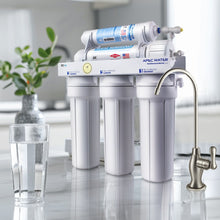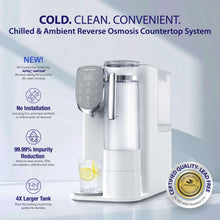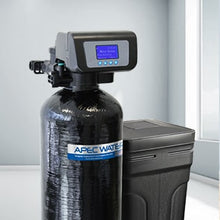Technological advances in membrane filtration systems and water quality concerns for granular systems that use sand and/ or anthracite are causing this paradigm shift. The concern over disinfectan...
The Importance to Test for Total Coliforms and Fecal Coliforms in Water
To put it briefly, these organisms are good indicators of the potential contamination of a water source. Coliform bacteria have been used to evaluate the general quality of water. Testing for colif...
Why are communities beginning to look at wastewater as a potential drinking water source?
The biggest reason is because many metropolitan areas are outgrowing their water supply, and unless they are able to come up with additional sources or significantly conserve the water they curren...
WHICH TYPE OF GERM IS HARDEST TO KILL IN DRINKING WATER, viruses, bacteria, or protozoan cysts?
In general, viruses are more difficult to kill than bacteria, but the disinfection step in water treatment is adequate to prevent either type of germ from reaching the consumer. Viruses are the sm...
What is methylmercury and why is it such a concern in aquatic environments?
Mercury is found in the environment as a result of natural and human activities. The amount of mercury that cycles in the environment has increased since the industrial age. The main source of mer...
What is biofouling in a water pump, filter or plumbing system?
Every spring when the snow melts, there it is - rust. Unsightly, almost evil, rust plagues us. That small reddish-brown speck is suddenly a massive crater, slowly sucking the mechanical life out o...
Water Contamination The alkalinity of water is a measure of how much acid it can neutralize. If any changes are made to the water that could raise or lower the pH value, alkalinity acts as a buffe...
What are the major elements of a Consumer Confidence Report (CCR)?
A CCR must contain, at a minimum, the following elements: Information on the type and source of water (i.e., ground water, surface water, a combination of the two, or water obtained from another...
In 2006, about 80% of the population received tap water from a state-regulated public water supply. During the past five years, 99% of larger water systems met all health-based water quality stand...
Does simple monitoring of finished water at the treatment plant guarantee good water quality at the tap? Not always because a number of process changes in water treatment techniques, including mod...
This is a debatable issue among scientists. Some believe there is a link between magnesium deficiency and certain human health problems including cardiovascular diseases. Magnesium is the fourth m...
Understanding Arsenic Contamination in Water: Sources, Risks, and Remediation
In short, yes it is possible. Here's how...if a raw water source contains arsenic below the drinking water standard, water utilities do not generally attempt to reduce or remove this arsenic from ...
Good question. It would be easy to assume that because your drinking water is safe, or your car...that it's ok to not mess with perfection. Sounds logical, right? The problem is the knowledge base...
How does a Consumer Confidence Report (CCR) get distributed to the public?
You may have heard of your water utility participating in a quality checklist, or a 'report-card' on their water quality and wondered what it is. The report is called a Consumer Confidence Report,...
How likely am I to drink water contaminated with cyanobacteria and its toxins?
All in all, this is very unlikely. Relatively few incidents of human poisoning have been reported. This is because people usually won't drink water contaminated with cyanobacteria because of the s...



